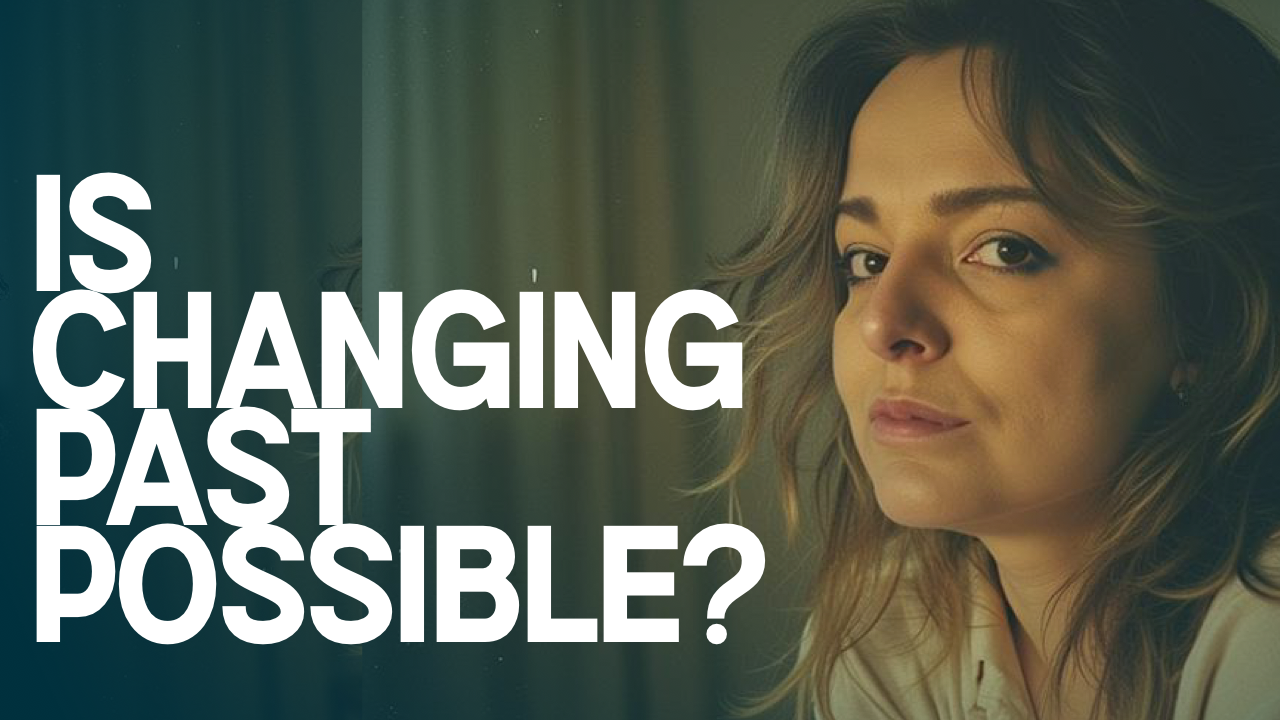Have you ever thought about erasing your past or, at the very least, a hurtful part of it? Keep watching, and you’ll find out that maybe, just maybe, it is possible.
But to answer this question, let’s embark on an exploration of the subject of REVISION.
THE CONCEPT OF REVISION
What is revision?
Revision, in this context, refers to a technique where we consciously REVISIT OUR MEMORIES and intentionally reinterpret them or even reenact them in a more positive light. The idea is to modify our perception of past events, emphasizing positive aspects and diminishing negative emotions associated with them. By doing so, we can potentially heal trauma, improve our self-image, boost confidence, and even RESHAPE OUR FUTURE OUTCOMES.
IS IT TRUE?
While revision techniques may sound like a self-help concept, there is a growing body of scientific research that supports its potential effectiveness. I found some NOTABLE STUDIES that have explored the concept of memory reconsolidation and its implications for revision.
One significant study conducted by Elizabeth J. Phelps (of Harvard University) explored MEMORY RECONSOLIDATION. The study found that memories can be modified when they are retrieved, suggesting the possibility of altering our past perceptions. This research sheds light on the adaptability of memories and provides a scientific basis for the effectiveness of revision techniques.<EXCERPT>
In addition to memory reconsolidation, other studies have examined the phenomenon of MEMORY DISTORTION and the reconstructive nature of our recollections. Psychologist Elizabeth F. Loftus (University of California, Irvine) conducted pioneering research in this area, showing that our memories can be influenced and distorted by various factors such as suggestion and misinformation. <EXCERPT
So, looks like changing what we remember our past events or how we remember them is possible?
Research by Dr. Karim Nader (Neuroscientist, McGill University) has focused on MEMORY REACTIVATION and updating. Dr. Nader’s experiments have shown that when memories are reactivated, they become temporarily unstable or SUSCEPTIBLE TO CHANGE. <EXCERPT>
WOW, pretty wild!
Another influential study of conducted by Dr. Daniel Schacter (Harvard University), a prominent memory researcher explored the phenomenon of constructive memory. The research demonstrated that our memories are not perfect replicas of past events but are rather RECONSTRUCTED AND INFLUENCED by various factors such as expectations and emotions. <EXCERPT>
WHY ISN’T ANYONE TALKING ABOUT IT ?!
Well, they have been, actually.
Author and speaker Tony Robbins has spoken extensively about the power of reinterpreting past events and reframing them to empower oneself. He believes that by CHANGING OUR PERSPECTIVE on the past, we can transform our beliefs and create a more positive self-image.
Psychologist and author Dr. Joe Dispenza who’s work combines neuroscience, epigenetics, and spirituality, also emphasizes the importance of revisiting and revising memories to break free from limiting beliefs.
Neville Goddard, a renowned author and lecturer, explored the concept of revision and its potential for restructuring our past memories. He believed that our INTERPRETATIONS OF PAST EVENTS, rather than the events themselves, play a crucial role in shaping our beliefs and subsequent actions. Through the practice of revision, we have the ability to consciously revisit these memories and modify our perception of them, leading to a transformation of our present circumstances and the CREATION OF A DESIRED FUTURE.
Goddard talked about vividly experiencing the revised version of the past as if it were happening in the present moment. By immersing ourselves in the feeling of the DESIRED OUTCOME, we imprint new thought patterns in our subconscious mind. With consistent practice and a firm conviction in the power of the mind, revision can bring about profound shifts, transform our present reality and MANIFEST A DESIRED FUTURE.
Here;s what Nevile Goddard talked about Revision.
<NEVILLE GODDARD>
THE TECHNIQUE
So, basically, set aside dedicated time for reflection, choose a quiet and comfortable space where you can focus on revisiting your memories without distractions. Calm and peaceful environment may help.
Next, identify specific memories that you believe have had a significant impact on your self-image. Just to be safe, maybe it’s a good idea to start with less emotionally charged memories, gradually moving towards more challenging ones.
As you revisit each memory, consciously choose to reinterpret it in a more positive light to create a more empowering narrative.
It’s important to approach this process with self-compassion and understanding. Remember that the goal is not to deny or invalidate your past emotions but to make your personal story MORE POWERFUL.
SO, CAN WE CHANGE THE PAST?
Since our perception of the past is predominantly constructed through the lens of our memories, which, as studies show, are undeniably susceptible to change, memory serves as a critical link between our present selves and the events that have shaped our lives. However, it is far from an accurate and objective record. As time passes, our memories undergo a process of reconstruction, influenced by our evolving beliefs, perceptions, and the information we encounter. Today’s journey has revealed that we have the ability to INTENTIONALLY MODIFY OUR MEMORIES.
If we can indeed modify our memories, it means that we can also modify our version of the past. After all, the past we know and the past that has shaped us into who we are is the one stored in our memories. It is THE ONLY PAST we have access to. In essence, the fluidity of memory allows us to practically change our perception of the past through memory revision. This not only impacts our understanding of ourselves but also influences our relationship with the world around us.
In conclusion, OUR MEMORIES, being the primary source of our perception of the past, ARE NOT FIXED. They undergo constant reconstruction and are subject to modification. We do have the capacity to intentionally modify our memories and, as a result, shape our perception of the past. So why not TAKE THE DRIVER’S SEAT in this process?
There are numerous tutorials on how to approach the process of revision out there. If you decide to explore revision techniques, remember to approach them with an open mind and realistic expectations. Embrace the power of SELF-REFLECTION, REINTERPRETATION, AND THE POTENTIAL FOR PERSONAL TRANSFORMATION.
Until next time, take care and continue to shape your reality with self-compassion.



